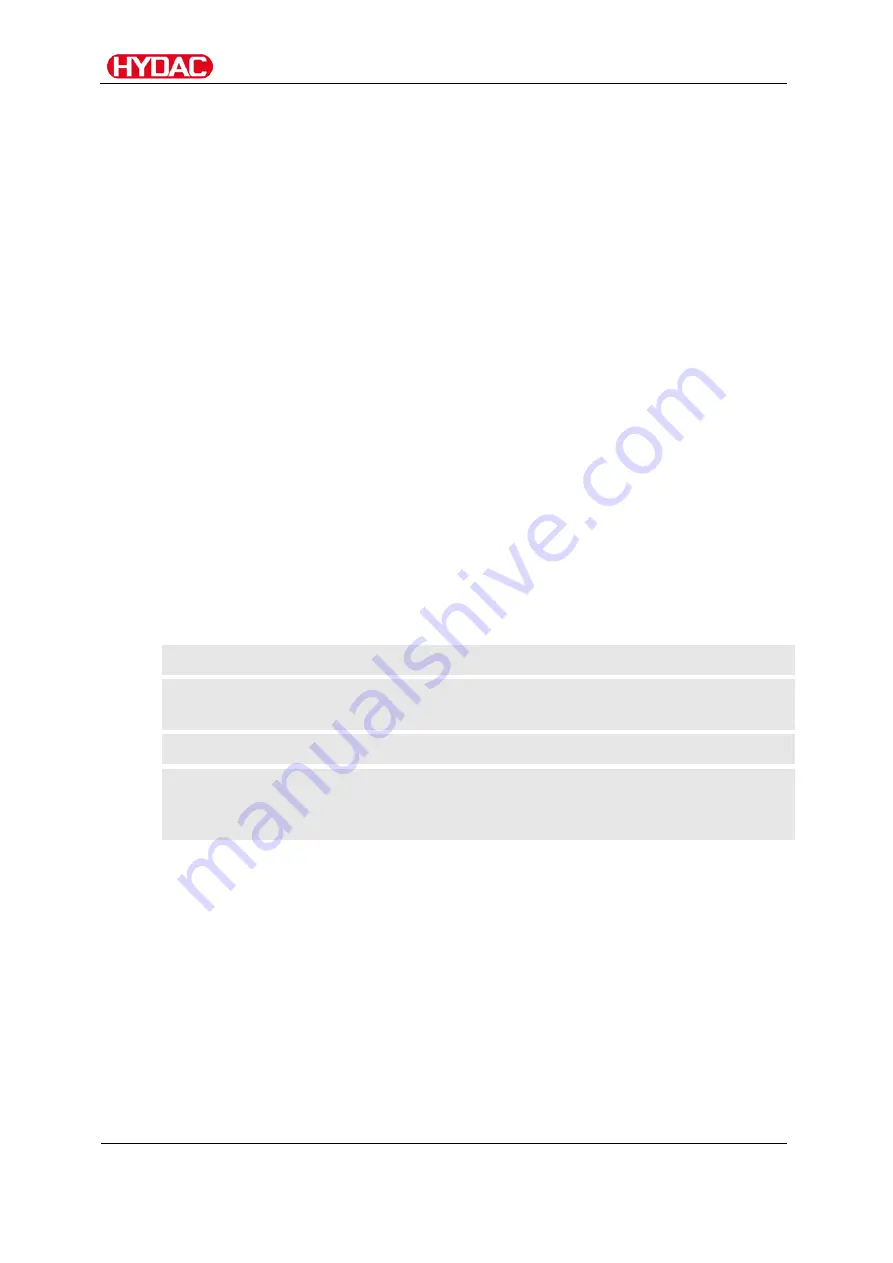
Description of unit
OXiStop OXS
en
Page 22 / 108
MoWa OXS 3992763e en-us 2018-08-10.docx
2018-08-10
Achievable degassing rate/residual water content
The achievable degassing rate is:
≈ 8 l/h at 20% air content
≈ 4 l/h at 10% air content
≈ 0.8 l/h at 2% air content
The achievable residual water content is
≤50 ppm (depending on the fluid).
The degassing capacity/degassing speed depend, in particular, on the oil
type, oil temperature, oil quantity, tank properties, residual air content and the
environmental conditions. Considerable deviations may occur depending on
the application.
Calculating differential operating volume
Δ
V
Calculate the required OXS size/differential operating volume in accordance
with the actual volume differences of the hydraulic system's cylinders,
accumulators and hoses.
Take into account an additional required volume for the thermal expansion of
the oil and any continuous oil leakage. Double this volume for safety reasons.
Use the following formula to calculate the differential operating volume for the
OXiStop:
Δ
V =
Σ V
Shell
+ 2(
Σ
Δ
V
Cyl
+
Σ
Δ
V
Hoses
+
Σ
Δ
V
Temp
)
Δ
V
= Difference volume
->
Differential Volume
Σ V
Shell
=
Σ Shell volume
->
Σ Casing volume of the
hydraulic accumulators
Σ
Δ
V
Hoses
=
Σ
Δ
Volume hoses
->
Σ
Δ
Volume of hose lines
Σ
Δ
V
Temp
=
Σ
Δ
Volume
temperature
expansion
->
Σ
Δ
Volume arising from
thermal expansion
When configuring/selecting the size, also note the following:
-
The typical 10-fold reduction in the oil volume reduces the oil's mean
dwell time in the tank. This causes the mixing-completion
temperature/steady-state temperature to be reached more quickly.
Attach the OXS in such a way that the oil that is fed to the cooling circuit
is removed directly from the tank's return line area with no mixing
occurring in the tank beforehand, which would result in a lower
temperature difference in the cooling circuit.
















































